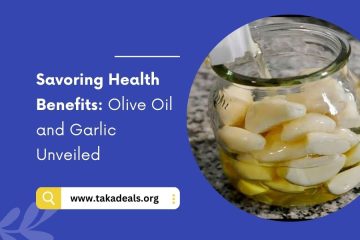Exploring Some Indian Cuisine: Health Benefits & Recipes
Introduction
Indian culinary artistry is more than a mere confluence of tantalizing tastes and a kaleidoscope of hues; it’s a cornucopia of nourishment. The quintessential Indian meal transcends the mere gratification of gustatory desires; it’s a celebration of bodily sustenance. In this thorough exposition, we shall delve into the nutritive essence of Indian staples such as roti, chapati, paneer, and dal. Discover their vital contributions to a balanced diet. We shall also demystify the caloric intricacies, the enchantment of spices, and their seamless integration into a weight management odyssey. Embark on an epicurean and nutritive odyssey!
Understanding the Basics: Roti and Chapati
The Staple Bread
Roti and chapati, fundamental to Indian gastronomy, are more than mere edibles; they are its bedrock. Let’s dissect their nutritive value:
The Nutritional Quintessence
Roti Calories (1 Roti / 1 रोटी का कैलोरी मूल्य): A solitary roti encompasses approximately 70-80 calories.
Chapati Calories (Calories in 1 Chapati): Analogous to roti, each chapati harbors 70-80 calories.
Chapati Nutrition: Predominantly carbohydrate-rich, with a substantial fiber quotient, particularly when crafted from whole wheat.
Nutrient Profile of Roti/chapati(per piece):
- Calories: 70-80
- Carbohydrates (g): 15-20
- Protein (g): 2-3
- Fiber (g): 1-2
Primarily wheat-based, roti and chapati are reservoirs of complex carbohydrates, offering sustained vigor. They also proffer modest protein and fiber, especially when whole wheat is employed.
Wheat Flour and Multigrain Atta: Beyond Simple Carbs
Wheat flour, the chief component, is a prominent source of B-vitamins and iron. Multigrain atta, a more salubrious variant, amalgamates diverse grains to augment its nutritional spectrum, including an elevated fiber quotient.
The Protein Segment: Paneer and Dal
Paneer: The Vegetarian Protagonist
Paneer, a cornerstone of Indian vegetarian fare, is renowned for its substantial protein content. Envision milk transformed, curdled into paneer – a luscious, velvety entity primed for gastronomic escapades.
Paneer isn’t merely an edible item; it’s a culinary shape-shifter. Whether grilled into kebabs, immersed in piquant curries, or incorporated into warm parathas, it metamorphoses mundane meals into gustatory marvels.
So, let’s decode the marvels of paneer, and prepare to transform your kitchen into a flavor carnival!
Paneer Nutritional Value (per 100g):
- Protein (g): 18-20
- Calories: 260-320
- Calcium (mg): 480
Paneer isn’t just a bastion of protein; it’s also a vital source of calcium, pivotal for bone health.
Dal: The Understated Dynamo
Dal, the kitchen’s unheralded champion, radiates comfort and solace. Imagine lentils, stewed into a sumptuous, velvety delight. It’s akin to a culinary embrace, brimming with fiber, vitamins, and minerals.
Nutritional Value of Popular Dals (per 100g cooked):
- Toor Dal: Protein (g) 7-10, Calories 104-120
- Moong Dal: Protein (g) 8-10, Calories 110-130
- Chana Dal: Protein (g) 9-11, Calories 120-140
Dal’s versatility renders it a nourishing and heartwarming dining choice.
Calorie Comprehension: An In-Depth View
Caloric Quantification in Common Indian Edibles
Grasping caloric values is vital for dietary equilibrium.
Typical Indian Food Items and Their Caloric Values (per Serving):
- Bowl of Rice: 130-150
- Bowl of Dal: 104-120
- Paratha: 200-300
- Jowar Roti: 49
- Parotta: 200-300
- Cup of Tea: 30-50
Chapati and Weight Reduction
Chapati, consumed judiciously, can integrate into a weight reduction regimen. The secret lies in harmonizing it with vegetables, fruits, and lean proteins.
Crafted from whole wheat, chapati is fiber-rich, fostering satiety and stabilizing glucose levels. It provides a gradual energy release, sustaining fullness and vitality.
This wholesome bread serves as a versatile base for healthy toppings. Combine it with nutrient-dense vegetables, lean proteins, or heart-friendly avocado for a fulfilling, flavor-rich meal that aligns with weight management goals.
The Spice Spectrum: Chana Masala and Dry Mango Powder
Chana Masala: A Flavor-Rich Protein Source
Chana masala, a zesty chickpea concoction, is not only a palatable delight but also a substantial source of protein and dietary fiber.
Dry Mango Powder: The Zesty Antioxidant
Employed in Indian culinary practices, dry mango powder imparts a tangy essence and acts as an antioxidant, facilitating digestion and bolstering overall wellness.
Incorporating Indian Cuisine into a Balanced Diet
Nutrient Equilibrium for Wellness
Envision crafting an Indian diet akin to an artful composition. Begin with the foundational whole grains like roti and chapati. Introduce the protein heavyweights – paneer and dal, akin to nutritional Avengers on your platter.
Then, infuse your diet with a spectrum of vegetables and fruits, creating a vibrant, flavor-packed, and nourishing ensemble.
A well-curated Indian diet transcends mere healthfulness; it transforms each meal into an unforgettable flavor journey, balancing taste with nourishment.
Conclusion: A Fusion of Flavor and Well-being
Indian everyday fare is a harmonious blend of delectable and wholesome. Knowledge of these dishes’ compositions aids in enjoying a flavorful yet health-conscious diet. Consider roti and chapati – not just staples, but energy sources. Paneer and dal fortify muscles.
Spices, the culinary superheroes, elevate taste while promoting health. Be it the zest of dry mango powder or the nutritive richness of chana masala, these spices elevate culinary delights and foster well-being. Indian cuisine offers a plethora of palatable and healthy choices, whether one is calorie-conscious or seeking plant-based proteins.
In essence, embracing the diverse and nutritious Indian culinary landscape is more than mere consumption; it’s a vibrant lifestyle choice. A journey that nourishes both the body and the soul, blending tradition, taste, and wellness.


0 Comments